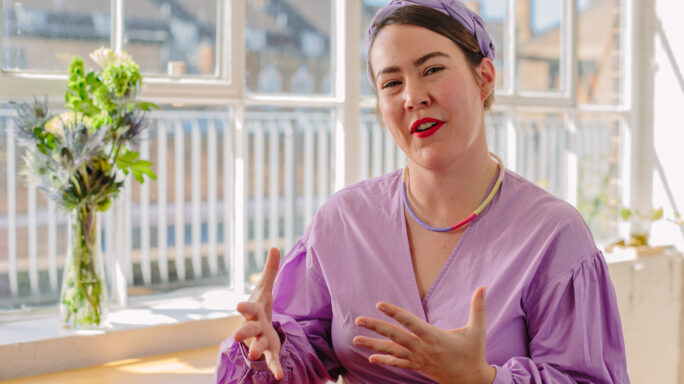Season 2: Unlocking productivity
Keeping your focus in changing times

As someone who has owned and operated various businesses in the last twenty years, I know that change can be a constant thorn in any business owners side. It’s something I’ve had to battle against, willingly and unwillingly, and it seems to just keep cropping up! In this article, I’d like to share some of the things I’ve learned along the way when it comes to change, and how to keep focus on the important things.
Benjamin Franklin may once have said “Nothing is certain, except death and taxes”, but in recent years we’ve been exposed to more change than I can remember. Whether forced by the pandemic, political issues, technological advancement, or societal development; we are finding new ways to communicate, work, live, and rest.
The thing is, whilst change can be difficult, it is also a constant factor in our lives, and something that we have to get comfortable with. Whilst this may sound like it’s something for other people who actively seek change, it’s actually something we can all embrace with some simple techniques.
Firstly, we have to ensure that we have mental clarity around whatever change is happening.
This is often the most difficult part of change, particularly those driven by ‘big picture’ changes. As a recent example, businesses that traded with countries in the EU found that changes in their business were an inevitable result of geopolitical changes. It would have been all too easy for an entrepreneur to become consumed by the wider ramifications of the ‘big change’, and lose sight of the impact on the business. After all, newspapers have countless pages to fill, and good news rarely sells newspapers!
First things first – let’s get control of the situation
So to achieve mental clarity, the first step is making sure that you are clear on what is in your control, and what isn’t. For those who know the SWOT (Strengths, Weaknesses, Opportunities, Threats) management model, these would generally be the things listed under Opportunities and Threats. For many business owners, they are fully aware of the opportunities and actively look to embrace them – but for this exercise, I would suggest that you pay attention to the threats: list them out fully; and then be mindful of them but importantly, not consumed by them.
Use ‘fear setting’ to help you clarify the risks
Next up, it is important to rationalise any fears that you have around change, and I tend to use a process called ‘fear setting’ for this.
List out all of your fears about the change – even those scary ones at the back of your mind – and then rank them on a scale of 1 – 10 with two different scores. The first is the impact if the fear materialised, and the second is the likelihood of it happening. If you use 10 as high impact / high likelihood, and bearing in mind that a fear with a score of 10 / 10 is a fear of something that will kill you with absolute certainty, you’ll find that you are able to more rationally consider your fears and take steps within any change process to mitigate those with high impact.
These two steps are vital for calming down the nagging doubts you may have about any change, and are a big step towards the mental clarity that you need to focus during the process. They also then allow you to think more clearly about actively facing the change head on and being the change, rather than allowing change to happen to you.
Again, there’s a really simple process that I use to manage change, that fits on a single sheet of paper. It consists of every question in the English language, and by answering these questions, you and your team can attack any change head on:
What: What is the change? Summarise the change in a sentence or two, in words that an eight year old who doesn’t know your business can understand. Rather than dive into the nuances of the change, focus on the big picture. This often requires a bit of work to get to a concise statement.
When: Set your overall deadline. It is likely that there will be milestones along the way, and potential delays – at this stage, all we need is an indication of whether change should be effected in days, months or years.
Where: Where will this change take place? If you operate in a single location, or work from home, this question might be very easy to answer.
Who: Who does this change impact? When answering this question, you need to ‘peel away the onion’ and not just stick with the obvious. It is likely that any change in your business could impact you, your team, your suppliers and your customers. But it could also impact those further up a supply chain, families, the local community, the industry you are in – make sure you brainstorm everyone who is impacted.
How: What are the first steps to effect this change? I don’t expect anyone to know every detail, but knowing and noting down the first step really helps set the direction of travel for change.
And finally, the most important question:
Why: Why does this change need to take place?
It would be very easy to presume that everyone you identified in the ‘who’ would embrace your ‘why’, but the reality is that different people will have different motivators. At it’s simplest, ‘making more money’ might be appealing to you but not necessarily to your team or your customers! And changes that might seem a little more ‘win-win’ might still have different levels of acceptance from your team members and other stakeholders: Will it impact their workload? Will they fear redundancy from any automation? Wearing their ‘hat’ might help you communicate any change more effectively.
And one last thing. Given the current uncertainty about the UK tax system, and the constant changes we seem to be seeing, I’d actually tweak Franklin’s quote. Nothing is certain, except death and change.





Leave a comment